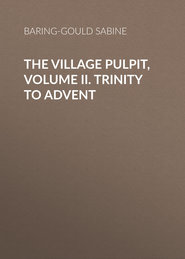По всем вопросам обращайтесь на: info@litportal.ru
(©) 2003-2024.
✖
A Book of the Pyrenees
Настройки чтения
Размер шрифта
Высота строк
Поля
The dread of the cold winds over the snows of the Alps and the Cevennes is everywhere apparent. Reeds grow in the dykes to a great height, from twelve to fourteen feet, and even more, and these are cut and formed into mats to barricade the fields and gardens, and give some shelter to them from the piercing blast that has bent every tree from the direction whence it blows. Round Perpignan every patch of flower or vegetable garden is thus hedged about.
At Perpignan the Count de Grammont met the Abbé Poussatin, when he was retreating with the Prince of Condé after the unsuccessful campaign in Catalonia, in 1647. Grammont says: —
“At last we arrived at Perpignan on a holiday; a company of Catalans, who were dancing in the street, out of respect to the prince, came forward to dance under his windows. Monsieur Poussatin, in a little black jacket, danced in the middle of this company, as if he were really mad. I immediately recognized him as my countryman, from his manner of skipping and frisking about. The prince was charmed with his humour and activity. After the dance I sent for him, and inquired who he was. ‘A poor priest, at your service, my lord,’ said he; ‘my name is Poussatin, and Béarn is my native country. I was going into Catalonia to serve in the infantry, for, God be praised, I can march very well on foot; but since the war is happily concluded, if your lordship pleases to take me into your service, I would follow you everywhere, and serve you faithfully.’ ‘Monsieur Poussatin,’ said I, ‘my lordship has no great occasion for a chaplain; but since you are so well disposed towards me, I will take you into my service.’
“The Prince of Condé, who was present at this conversation, was overjoyed at my having a chaplain. Poor Poussatin was in a very tattered condition, and I had no time to provide him with a proper habit at Perpignan; but giving him a spare livery of one of the Marshal de Grammont’s servants, I made him get up behind the prince’s coach, who was like to die with laughing every time he looked at poor Poussatin’s uncanonical mien in a yellow livery.
“As soon as we arrived in Paris the story was told to the queen, who at first expressed some surprise at it; this, however, did not prevent her from wishing to see my chaplain dance; for in Spain it is not altogether so strange to see ecclesiastics dance, as to see them in livery.
“Poussatin performed wonders before the queen; but as he danced with great sprightliness, she could not bear the savour which his violent motions diffused through the room; the ladies likewise began to pray for relief.”
The Eastern Pyrenees have, to my mind, been unduly neglected, and yet they present scenes of great beauty, and are very easily reached. To botanists they should be especially attractive. The Val d’Eyne, near Mont Louis, is known to possess flowers found nowhere else in the range. The ravine of the Aude is as fine as any in the Hautes Pyrénées. There are peaks that run up to 10,000 feet, and are covered with snow all the year, and if the glaciers be insignificant, glaciers are not essential to beauty. There are more mountain tarns here than elsewhere, and some of these the largest in the Pyrenees. In ecclesiastical architecture this is by far the richest portion of the chain, as the churches have not been wrecked by the Huguenots as in Béarn and Bigorre. And what is more, there is less rain, there are clearer and bluer skies. Some of the watering-places are sweet and sheltered nooks where one can be in summer sunlight early in April, even at the end of March, sheltered from every wind, and with excursions possible all about them, and what is more, are not so fashionable, not so savouring of Paris as Bagnères and Luchon, Cauterez, and Eauxbonnes. In the heats of summer no more cool and invigorating climate can be found than in some of those towns and villages on lofty plateaux, like Mont Louis. As to the Pyrenees in general, many best able to judge and with widest experience of mountain scenery, prefer them to the Alps of Switzerland and of Tyrol, so overrun with the tripper and the herds conducted by Cook. The colouring is richer and more varied, the foliage, the flowers more abundant; and the peasantry have not lost their simplicity, as have the Swiss.
I will conclude with the words of a Pyrenean poet, written in his Gascon dialect, but rendered into French: “Puisse-je remonter sur ces trônes flamboyants de porphyre et de glace, ou tout est froid, même l’éclair; j’irai révoir du haut de ces nues, ces horizons grands comme l’éternité, mais que je ne trouverais jamais assez illimités. Et quand aura sonné l’heure fatale et cruelle du repos, j’irais m’assoir au bord de l’Océan ou de la Méditerranée, mais toujours en vue des Pyrénées.”
notes
1
É. Reclus: Géographie universelle, II. “La France.”
2
White (H.), The Massacre of S. Bartholomew. London, 1868.
3
Sherer, Military Memoirs of the Duke of Wellington. London, 1832.
4
Lawlor, Pilgrimages in the Pyrenees. London, 1870.
5
Ludlow, Popular Epics of the Middle Ages. London, 1865.
6
White (H.), The Massacre of S. Bartholomew. London, 1868.
7
Blackburn (H.), The Pyrenees. London, 1867.
8
Bonnefon, Lourdes et ses tenanciers. Paris, 1906. The value of this book is in the second part, that contains the hitherto unpublished documents from the Paris and Departmental archives relative to the course of development of the Lourdes story.
At Perpignan the Count de Grammont met the Abbé Poussatin, when he was retreating with the Prince of Condé after the unsuccessful campaign in Catalonia, in 1647. Grammont says: —
“At last we arrived at Perpignan on a holiday; a company of Catalans, who were dancing in the street, out of respect to the prince, came forward to dance under his windows. Monsieur Poussatin, in a little black jacket, danced in the middle of this company, as if he were really mad. I immediately recognized him as my countryman, from his manner of skipping and frisking about. The prince was charmed with his humour and activity. After the dance I sent for him, and inquired who he was. ‘A poor priest, at your service, my lord,’ said he; ‘my name is Poussatin, and Béarn is my native country. I was going into Catalonia to serve in the infantry, for, God be praised, I can march very well on foot; but since the war is happily concluded, if your lordship pleases to take me into your service, I would follow you everywhere, and serve you faithfully.’ ‘Monsieur Poussatin,’ said I, ‘my lordship has no great occasion for a chaplain; but since you are so well disposed towards me, I will take you into my service.’
“The Prince of Condé, who was present at this conversation, was overjoyed at my having a chaplain. Poor Poussatin was in a very tattered condition, and I had no time to provide him with a proper habit at Perpignan; but giving him a spare livery of one of the Marshal de Grammont’s servants, I made him get up behind the prince’s coach, who was like to die with laughing every time he looked at poor Poussatin’s uncanonical mien in a yellow livery.
“As soon as we arrived in Paris the story was told to the queen, who at first expressed some surprise at it; this, however, did not prevent her from wishing to see my chaplain dance; for in Spain it is not altogether so strange to see ecclesiastics dance, as to see them in livery.
“Poussatin performed wonders before the queen; but as he danced with great sprightliness, she could not bear the savour which his violent motions diffused through the room; the ladies likewise began to pray for relief.”
The Eastern Pyrenees have, to my mind, been unduly neglected, and yet they present scenes of great beauty, and are very easily reached. To botanists they should be especially attractive. The Val d’Eyne, near Mont Louis, is known to possess flowers found nowhere else in the range. The ravine of the Aude is as fine as any in the Hautes Pyrénées. There are peaks that run up to 10,000 feet, and are covered with snow all the year, and if the glaciers be insignificant, glaciers are not essential to beauty. There are more mountain tarns here than elsewhere, and some of these the largest in the Pyrenees. In ecclesiastical architecture this is by far the richest portion of the chain, as the churches have not been wrecked by the Huguenots as in Béarn and Bigorre. And what is more, there is less rain, there are clearer and bluer skies. Some of the watering-places are sweet and sheltered nooks where one can be in summer sunlight early in April, even at the end of March, sheltered from every wind, and with excursions possible all about them, and what is more, are not so fashionable, not so savouring of Paris as Bagnères and Luchon, Cauterez, and Eauxbonnes. In the heats of summer no more cool and invigorating climate can be found than in some of those towns and villages on lofty plateaux, like Mont Louis. As to the Pyrenees in general, many best able to judge and with widest experience of mountain scenery, prefer them to the Alps of Switzerland and of Tyrol, so overrun with the tripper and the herds conducted by Cook. The colouring is richer and more varied, the foliage, the flowers more abundant; and the peasantry have not lost their simplicity, as have the Swiss.
I will conclude with the words of a Pyrenean poet, written in his Gascon dialect, but rendered into French: “Puisse-je remonter sur ces trônes flamboyants de porphyre et de glace, ou tout est froid, même l’éclair; j’irai révoir du haut de ces nues, ces horizons grands comme l’éternité, mais que je ne trouverais jamais assez illimités. Et quand aura sonné l’heure fatale et cruelle du repos, j’irais m’assoir au bord de l’Océan ou de la Méditerranée, mais toujours en vue des Pyrénées.”
notes
1
É. Reclus: Géographie universelle, II. “La France.”
2
White (H.), The Massacre of S. Bartholomew. London, 1868.
3
Sherer, Military Memoirs of the Duke of Wellington. London, 1832.
4
Lawlor, Pilgrimages in the Pyrenees. London, 1870.
5
Ludlow, Popular Epics of the Middle Ages. London, 1865.
6
White (H.), The Massacre of S. Bartholomew. London, 1868.
7
Blackburn (H.), The Pyrenees. London, 1867.
8
Bonnefon, Lourdes et ses tenanciers. Paris, 1906. The value of this book is in the second part, that contains the hitherto unpublished documents from the Paris and Departmental archives relative to the course of development of the Lourdes story.











